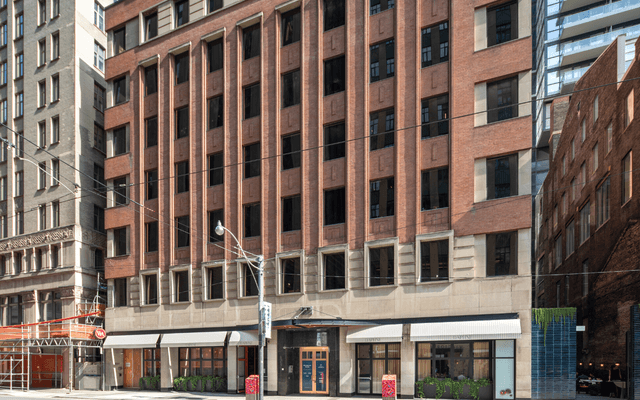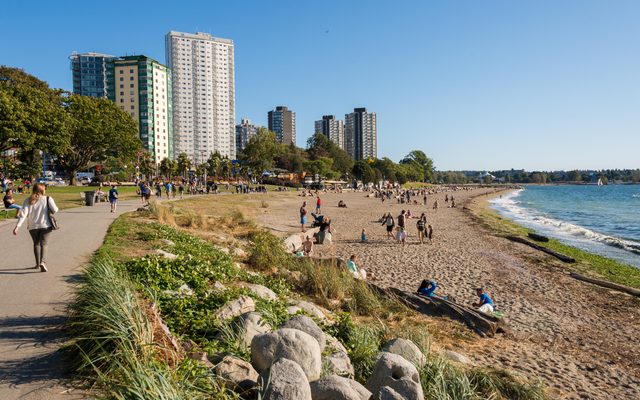- What Investor confidence has remained strong in multifamily investments across Canada’s major cities
- Why Supply-demand conditions are allowing for steady rent growth as interest rates begin to come down
- What next More appealing interest rates and federal government support will keep the market strong in 2024
With interest rates finally starting to dip and the federal government providing support for multifamily development, multifamily assets likely will remain attractive to investors in 2024, Marcus & Millichap said in a series of new reports.
The brokerage delved into what’s to come for multifamily investing in Calgary, Edmonton, Ottawa, Toronto and Vancouver, highlighting the effects that expected population growth, and subsequent demand shifts, will have.
Softening demand in Toronto
In Canada’s most populous city, rental demand is softening, the brokerage said, but it will be buoyed through 2024 by past immigration-related population gains. This, combined with limited supply, will push rents up 6% throughout the year.
Despite the multifamily market’s strong fundamentals, the total dollar volume sold was down 40% over the past year ending in June. Higher borrowing costs and relatively low capitalization rates kept buyers on the sidelines.
The average sale price has also taken a hit over the past year, down roughly 15%. Cap rates have hovered around 4% — the lowest among major commercial property types, Marcus & Millichap said.
Investment bottoming out in Vancouver
Demand for rentals soared in Vancouver in 2023 as an influx of international students and temporary foreign workers contributed to a 4.2% increase in population. With housing completions falling for the second year in a row, supply remains tight. Over half of the city’s submarkets experienced vacancy rates of less than 1%.
Vacancy is expected to remain relatively flat this year, ticking up just 10 bps. Rents are expected to jump 6.5% to an average of $1,940 per month.
Transaction volume improved markedly in the first few months of the year, with total dollar volume shooting up 465% in Q1. Q2 followed with a 40% uptick. The brokerage said that investment sales activity likely will continue to recover, highlighting the $800 million of sales that have closed over the last year.
Average sale prices are down 10% year over year. But with an average per-unit price of more than $300,000, Vancouver is still the priciest multifamily market in Canada. Vancouver submarkets with the highest rents, such as Burnaby and West Vancouver, continue to draw investors.
Investors mobilizing capital in Calgary
Calgary saw record population growth in 2023, a trend that carried over into 2024. In response, many housing developments have started construction over the past few years, with an expected 6,500 units completing this year.
With no rent controls in place, rents are expected to jump 10% this year, which accounts for an anticipated slow down in growth as more supply comes onto the market.
Over the past 12 months ending in June, sales volume surged 80%, including a near doubling in the $20m-plus category. “This signals that investors may have started to mobilize a greater amount of capital in anticipation of easing financing conditions,” Marcus & Millichap said.
Cap rates are holding stable at just below 5%. That’s above the national average even in the face of increasing property values, “suggesting that rental income growth outpaced price appreciation.”
Confidence in Edmonton
Edmonton too saw substantial population gains in 2023. Over 60,000 newcomers came to the city, nearly doubling the gains seen in 2021 and 2022 combined. As such, demand for rentals boomed, and Edmonton saw the steepest drop in vacancy rates out of the seven major metropolitan areas in Canada.
In 2024, vacancy is expected to continue trending down, falling another 40 bps to 2%. Meanwhile, an 8% growth in rents is anticipated, bringing the average to nearly $1,400 by yearend.
Investor confidence in the Edmonton multifamily market has been strong, with more than $1bn of transactions taking place in the trailing 12 months ending in June, a nearly 15% increase year-over-year.
The number of sales between $1m and $10m was up 25% in the first half, indicating “that some investors, anticipating lower financing costs in the near term, may have reentered the market by first allocating capital into lower-cost deals,” Marcus & Millichap said.
Ottawa to see more moderation
Ottawa’s two universities have helped drive population growth in recent years as they admitted an increasing number of international students. But with new federal restrictions in place, that growth and subsequent rental demand is expected to subside.
This, combined with healthy rental construction, should lead the city’s vacancy rate to increase slightly — by 10 bps — this year, Marcus & Millichap said. Amidst yearly turnover and new units being rented out at higher prices, the average rent is expected to increase 5.5% in 2024.
Multifamily sales prices have been flat in Ottawa, increasing just 1% compared with the previous year. Cap rates have hovered around 5%.
Total dollar volume, however, was up 80% quarter over quarter in Q2, with the majority of purchasers continuing to be private buyers rather than real estate investment trusts.




